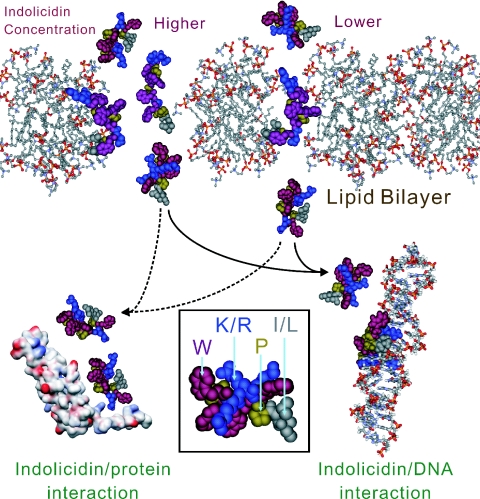Figure 9.
Cartoon representation showing the DNA-binding mechanism of the antimicrobial action of indolicidin and the roles of the peptide interacting with the lipid bilayer at different concentrations. At a concentration higher than the MIC indolicidin perturbs and lyses the cell membrane like normal cationic antimicrobial peptides. However, when the peptide concentration is lower (‘lower concentration’), indolicidin mainly kills bacteria by other processes, such as binding to DNA (full lines) and by docking with proteins (dotted lines). The inset show the CPK presentation of indolicidin, colored for different amino acid types. It can be reasonably assumed that indolicidin enters the cytoplasm to exert its action and that the changes in cytoplasmic permeability reflect the transport of the peptide across the membrane. After the transient perturbation and transfer to the cytoplasm, indolicidin then performs other functions. The multiple conformers of indolicidin can act as DNA synthesis inhibitors by binding to DNA or proteins involved in the process. Indolicidin may also have targets in other biosynthesis pathways or cell cycle signal transduction.

